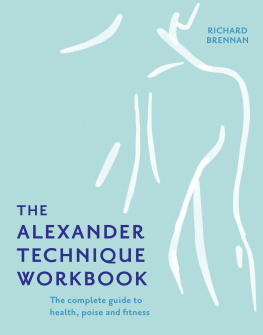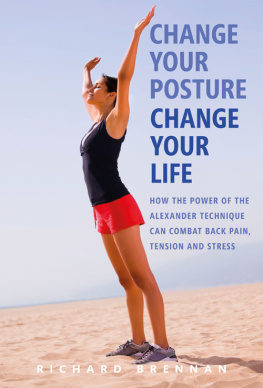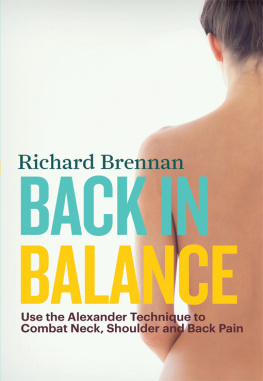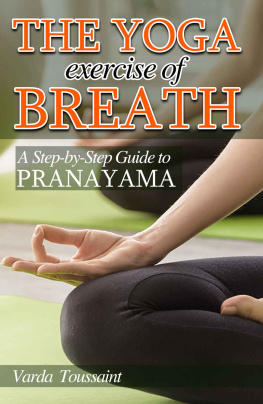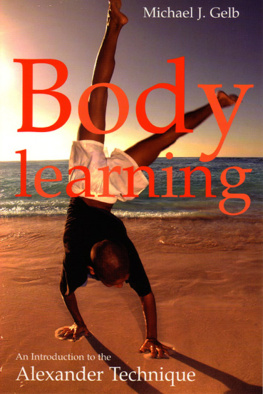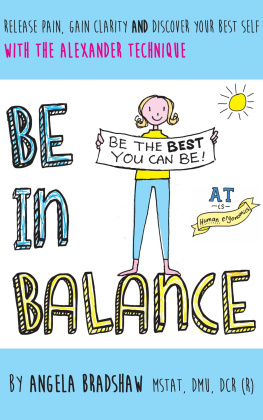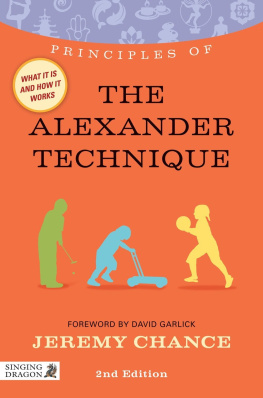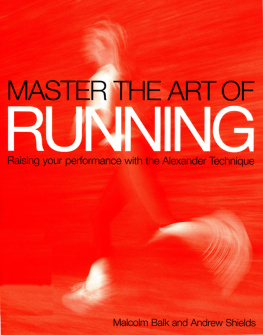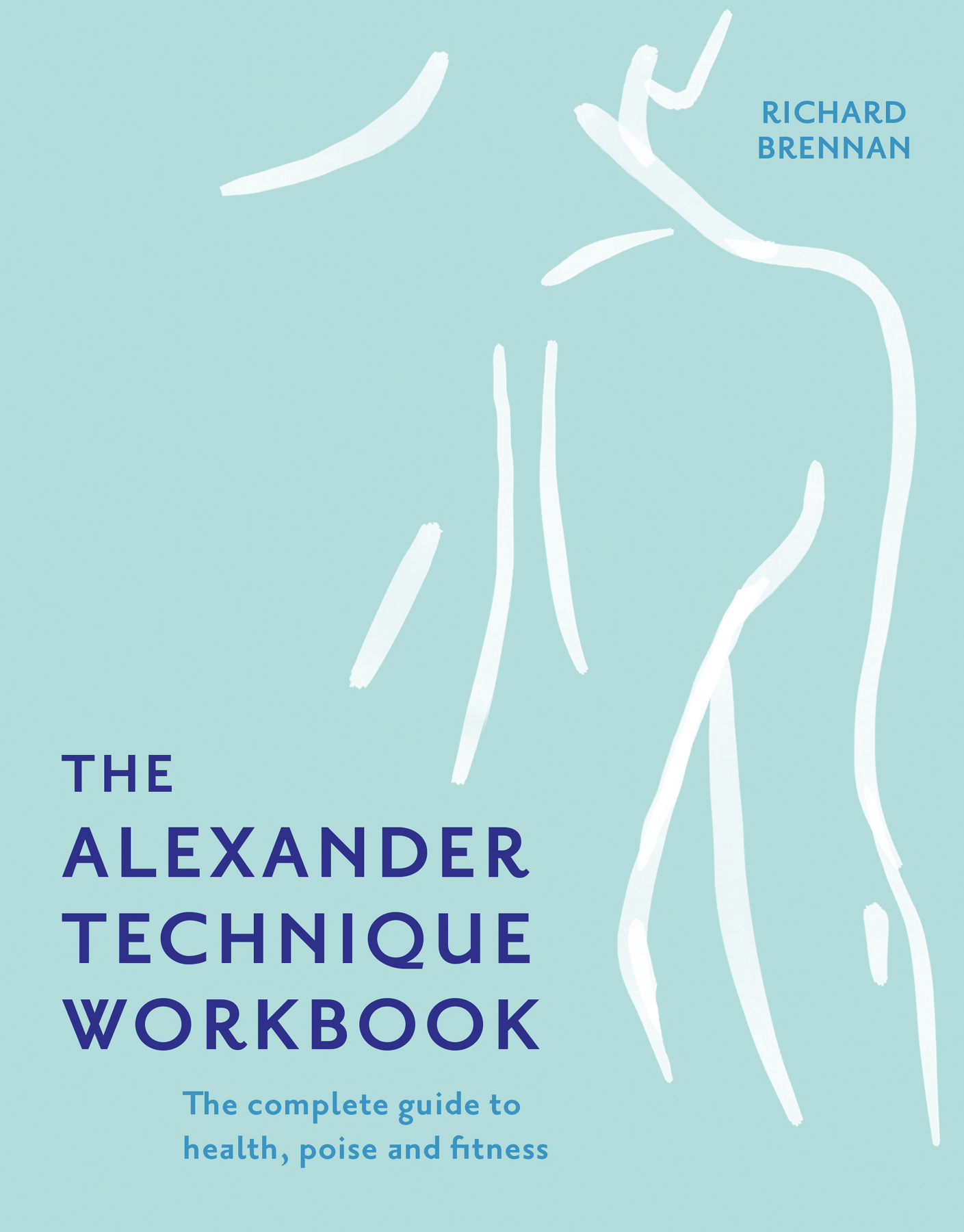Richard Brennan asserts the moral right to be identified as the author of this work. A catalogue record for this book is available from the British Library.
All rights reserved. No part of this publication may be reproduced, stored in a retrieval system, or transmitted, in any form or by any means, electronic, mechanical, photocopying, recording or otherwise, without the prior permission of the publishers.
This ebook contains the following accessibility features which, if supported by your device, can be accessed via your ereader/accessibility settings:

Caroline Molloy
To be what we are and to become what we are capable of becoming is the only end of life.
ROBERT LOUIS STEVENSON
It has been over 30 years since I wrote the first Alexander Technique Workbook, which has sold over 100,000 copies, and I have had many phone calls, e-mails and letters of appreciation thanking me for the book. For many, it was their first introduction to the Alexander Technique; some of those people are now Alexander teachers themselves.
The reason I wrote the book was to inform people about a very wonderful technique that had helped me a great deal when I was suffering with chronic back pain and sciatica. My only regret was that I hadnt discovered it earlier. It changed my life so dramatically that after just a few lessons I applied to do the three-year Alexander teacher training programme. When I qualified as a teacher in 1989
I wanted to find a way of letting more people know about the Technique. At that time there were not very many easy to read books on the Alexander Technique, and this prompted me to write a book that could be understood by someone who knew nothing about the subject at all.
The Alexander Technique is a method of releasing the physical and mental tensions that many of us have accumulated throughout our lives. Often we are completely unaware of these tensions until we become ill and are unable to go on. They can contribute to headaches, backache, heart problems, arthritis and depression, as well as to a whole range of other ailments. If these unconscious muscular tensions are allowed to continue, as they often are, they can affect our quality of life by accelerating the ageing process and decreasing our vitality.
The ease and grace with which we move slowly become lost as we are burdened by more responsibilities. The Alexander Technique can help us to regain that poise and ease during even the most simple tasks. Our body is our most precious possession, yet we tend to give it the least attention apart from when we are trying to look attractive. Without knowing it, we grossly interfere with our natural flow of movement to such an extent that many of us will at some time in our lives suffer from backache, solely due to poor posture. Yet there is nothing more attractive than someone who is moving in a balanced, graceful and co-ordinated way.
Vals story
Val Oatley
Age: 62 | Occupation: former ballet dancer
Val had arthritis in both her hands and feet, her shoulders and neck were in pain and she also suffered from chronic sciatica. After completing a course of day classes she had this to say:
By means of the Alexander Technique I have acquired an awareness of where my body is in space, which means I am now able to control my muscle tension by means of my brain. This was essential if I was ever to maintain a posture without straining my body unconsciously.
I have discovered a completeness of my mind and body so that it can work as a whole entity, instead of as a jumble of separate limbs, head and torso all working independently of one another. This, of course, relieves a lot of unnecessary muscle tension and teaches me a way of restoring the completeness of the body in a relaxed and co-ordinated way that had been lost in my early childhood.
Most of my aches and pains have dropped away leaving me able to achieve a balance and poise not only of the body, but of the mind as well.
Few people are aware of the enormous benefits that the Alexander Technique offers and, as a result, many millions of people every year suffer needlessly. In this book I hope to explain the Alexander Technique as simply as possible and, through simple observation exercises and procedures, to show clearly how it can help you to enjoy a happier and more fulfilling life.
This new edition has been updated and added to without changing the easy style of the original book. The old line drawings have been replaced by colour photographs which I hope enhance the quality of the book. When the original book came out, hardly anyone had heard of the Internet and very few people owned a computer. In fact, I wrote the first book on a typewriter, which shows you how far we have progressed over two decades. I sincerely hope you enjoy this book, and find that it helps you to move through life with greater ease.
Alexander established not only the beginnings of a far reaching science of the apparently involuntary movements we call reflexes, but a technique of correction and self-control which forms a substantial addition to our very slender resources in personal education.
GEORGE BERNARD SHAW, LONDON MUSIC
Since becoming an Alexander Technique teacher I have been interested in the different explanations of the Technique. Alexanders niece, Marjorie Barlow, said that the Alexander Technique is about knowing what you are doing, and making sure you can stop doing it if you so wish. It can, however, take a lifetime to know exactly what youre doing, and that is whats so intriguing about the Technique. It can be described as a way of releasing muscle tension that may be the direct cause of a neck or back problem, but it is so much more. It is about learning about yourself and your reaction to what is going on around you. It is a technique based on awareness and choice.
A couple of years ago, I came across a passage in A New Earth by Eckhart Tolle which, to me, described what the Technique is really about. He was talking about the importance of all human beings needing to find a balance between the human and the being parts of themselves. Tolle went on to say that whatever we do in this world belongs to a human dimension and, although it has a place and should be honoured, it will not be enough for a fulfilled and truly meaningful life. He clearly explains that the human part is never enough, no matter how hard we try or what we achieve. Tolle then indicated that we often forget about the being aspect of ourselves, which is found in the presence of consciousness, the consciousness that we all are, and that human and being are interwoven, not separate.

